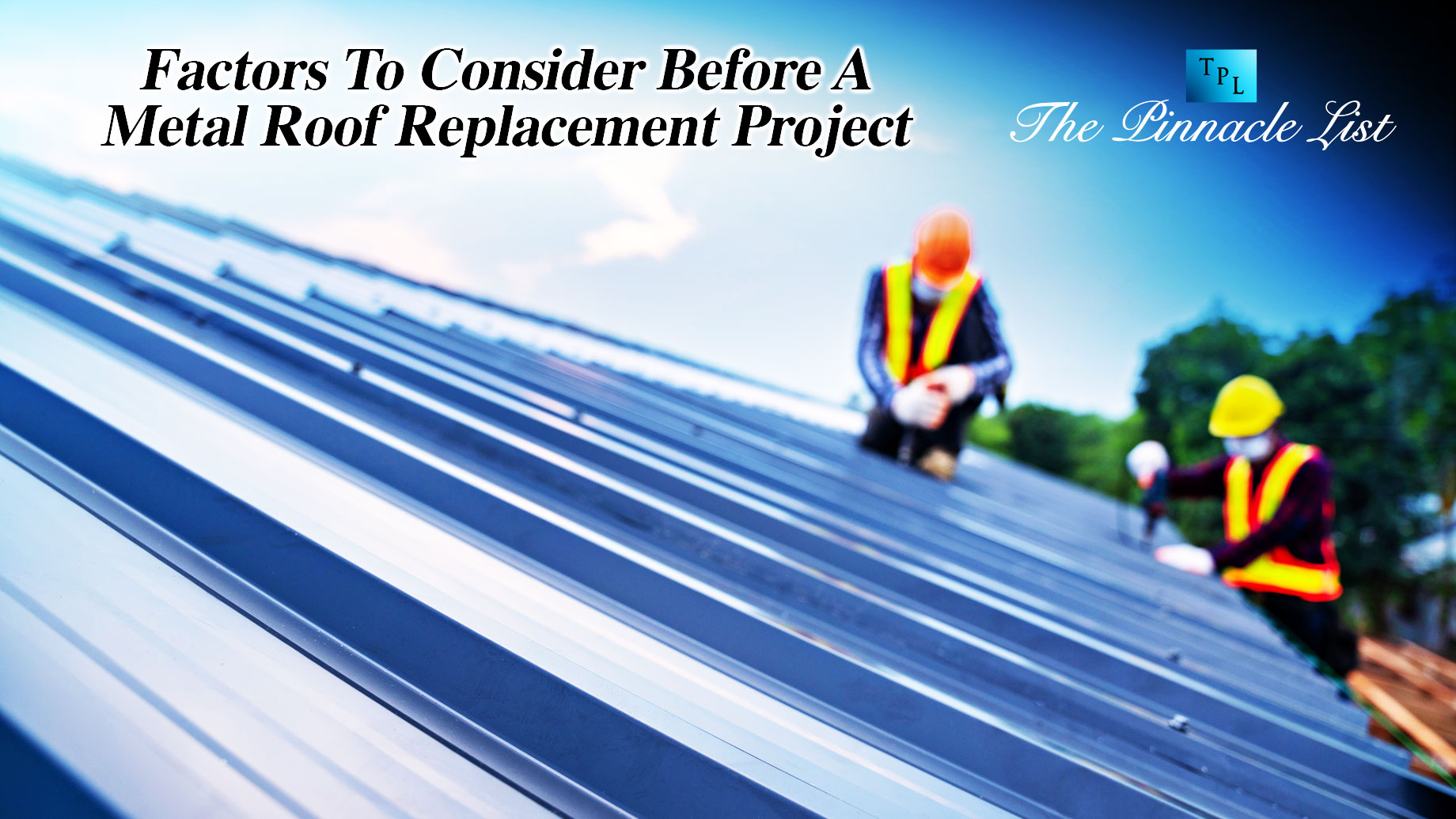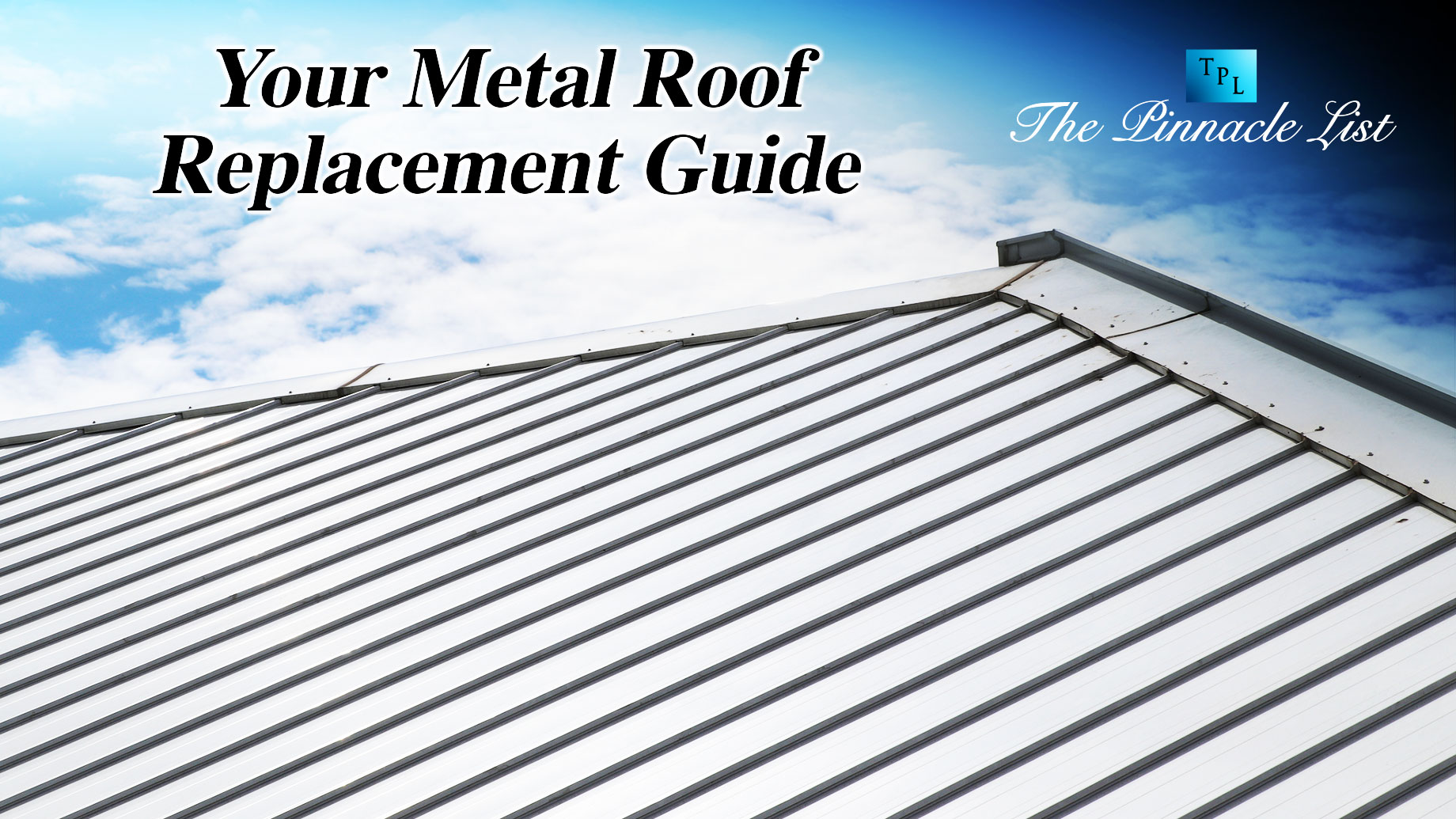
Metal roofs have gained popularity in recent years for their durability, aesthetic appeal, and energy efficiency. Homeowners, builders, and architects are increasingly recognizing their benefits, from weather resistance and longevity to their distinct, modern look. But, like all things, they don’t last forever. There comes a point when replacement becomes necessary, which necessitates an understanding of when and why to do so, and what it entails.
In particular, specific regions like the Midwest, with its varied climate, may require distinctive considerations in everything from material choice to maintenance strategy. For a metal roof replacement in Madison Wisconsin, accounting for unique weather conditions, building codes, and aesthetic preferences is crucial. As such, having a thorough understanding of these aspects becomes a prerequisite before taking on this substantial investment. With the right knowledge at hand, homeowners can navigate this process confidently, ensuring the journey to a new metal-based roof is as smooth as possible.
Understanding Metal Roofs
Simply put, a metal roof consists of metal pieces or tiles. It’s a broad category encompassing various types, such as aluminum, steel, copper, and zinc alloys.
Each metal type has unique advantages and disadvantages, such as aluminum being lightweight and rust-resistant, yet susceptible to denting. Known for their impressive resistance to extreme weather, longevity, and energy efficiency, metal roofs offer considerable benefits. They can be costlier upfront compared to other roofing materials and are sometimes susceptible to hail or falling branch damage.
A deep understanding of metal roofs is crucial to determine why and when replacement is necessary, our next point of discussion.
When Is It Time For A Roof Replacement?
Identifying the signs for metal roof renewal is crucial, especially given its potential lifespan of 40 to 70 years, significantly outlasting traditional asphalt roofing. However, this lifespan is greatly influenced by proper maintenance and optimal weather conditions. Spotting signs of significant wear and tear can guide you in deciding whether to repair or replace your roof.
Consider the following key indicators:
- Extensive Rusting: Rust can compromise the integrity of your roof. While some rust spots may be treatable, widespread rusting often signals a need for replacement.
- Leaks: Persistent leaks can lead to significant interior damage. If frequent repairs don’t solve the issue, a roof replacement might be in order.
- Loose Or Missing Panels: These can expose your home to the elements, leading to further damage. If several panels are affected, a replacement might be the best solution.
Understanding these signs ensures you’re well-prepared for the next step: examining the critical factors before undertaking a roof replacement.
Factors To Consider Before A Metal Roof Replacement
Undertaking a replacement requires careful consideration. Many aspects influence the decision-making process:
- Familiarize yourself with local building regulations and codes, which may restrict the use of specific materials due to fire safety regulations or environmental concerns.
- Assess the quality and durability of various metals. Different metals offer varying durability, longevity, and aesthetic appeal. Options like steel, aluminum, copper, or zinc each have unique strengths and drawbacks.
- Conduct a comprehensive cost evaluation considering the material, roof dimensions, and labor expenses. It’s essential to get a detailed, itemized quote to understand where your funds are directed.
- Reflect on how your local climate and weather conditions may influence the choice of roofing material, with certain materials being more suited to withstand heavy snow or high heat.
- Acknowledge the architectural style of your home—the roof should harmonize with it, whether it’s modern, traditional, or rustic.
- Consider energy efficiency—different metals can have varying impacts on your home’s insulation and energy costs. A material that suits your local climate and energy efficiency goals is ideal.
- Inspect for sound insulation. Depending on the metal type and insulation techniques used, the sound of rain on a metal roof can vary. If noise is a concern, explore sound-proofing options or materials that diminish noise.
- Determine the weight of the material—certain structures may require reinforcement to support heavier metals, affecting cost.
- Make sure the chosen product and installation are backed by warranties, which can avert significant future expenses.
- Gauge the sustainability of different materials, considering their environmental footprint and recyclability.
Armed with this knowledge, you can move forward, including choosing a reliable roofing contractor.
Choosing A Reliable Roofing Contractor
Keeping these factors in mind, it’s time to select a reliable roofing contractor. Seek a professional with an excellent reputation, solid references, and considerable experience in metal roof replacements.
Here’s what to look for:
- Reputation: Online reviews and testimonials from past clients can give you an insight into the contractor’s reliability and quality of work.
- Experience: Confirm that the contractor has substantial experience specifically in metal roof replacements. Ask about their training, certifications, and the number of similar projects they’ve handled.
- References: Ask for references and take the time to contact them. This can give you firsthand information about the contractor’s work.
Having chosen a contractor, you’re ready for the next stage: the actual replacement process.
The Process Of Replacing A Metal Roof
A replacement project involves several important stages:
- The process begins with the safe removal and eco-friendly disposal of the old roof.
- Preparing the roof deck. Proper deck preparation is crucial for the successful installation of the new roof. Any damage to the deck needs to be addressed before proceeding.
- Installing the new metal roof. This is the culmination of the process. It should be handled meticulously to ensure optimal performance and longevity.
Now that your new roof is installed, the next priority is ensuring it’s well-maintained for years to come.
Upkeep Advice For Your Newly Installed Metallic Roof
Post-installation, it’s essential to maintain your new metal roof to extend its lifespan. Regular inspections play a critical role in early detection of potential issues like signs of rust, sealant failure, and loose fasteners:
- Regular Cleaning: Removing debris like leaves and twigs can prevent rust and blockages in your gutter system.
- Inspections: Periodic professional inspections can spot potential issues before they become significant problems.
- Prompt Repairs: If any damage is detected, prompt repairs can prevent further deterioration.
Using these tips, you can maintain your new roof effectively, guaranteeing years of reliable protection.
Summing Up: Your Metal Roof Replacement Guide

Successful metal roof replacement hinges on a thorough understanding of the material, recognizing when replacement is necessary, and a well-informed decision-making process. An informed decision involves considering various factors: material quality, local climate, architectural style, and building regulations, among others discussed above. Selecting a reliable contractor, understanding the replacement process, and maintaining the roof post-installation are all pivotal steps to ensure long-term service and value from your new metal roof.